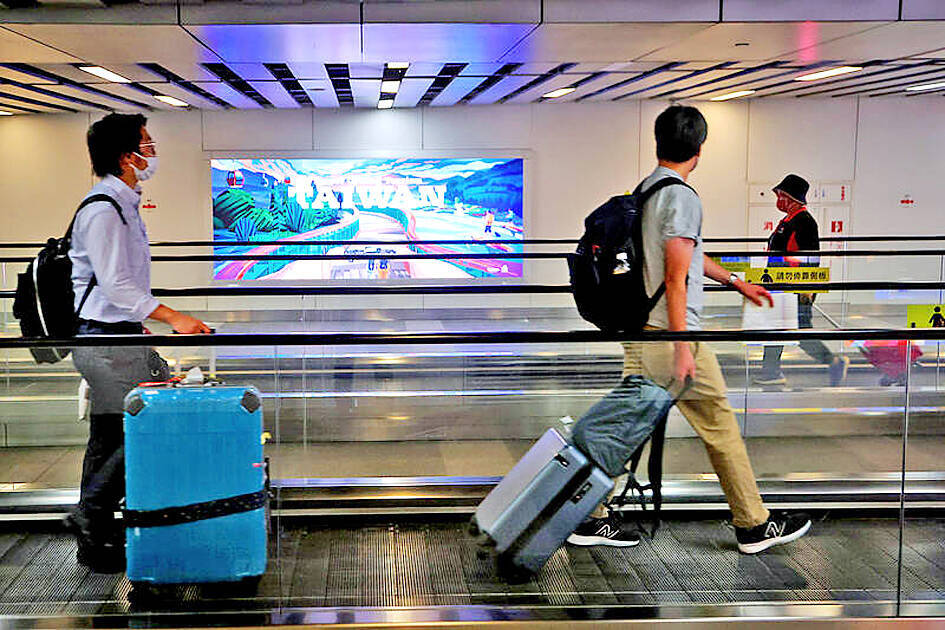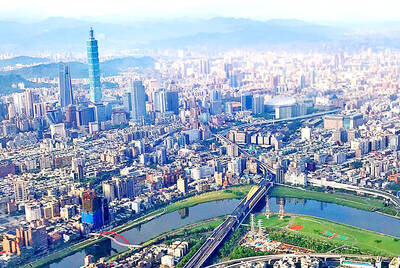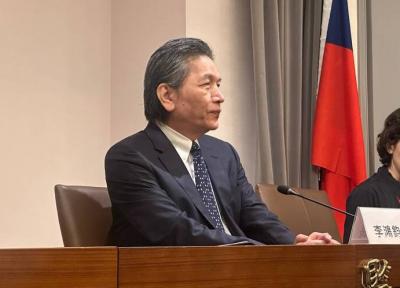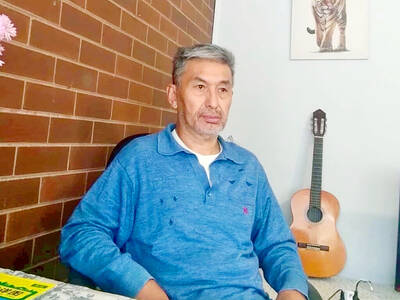Tourism officials are increasingly eyeing Southeast Asian tourists as a key to meeting the national target of attracting 10 million foreign visitors this year, recent government measures showed.
Southeast Asia is of great interest to officials, as Tourism Administration data showed that more than 2 million people from the region had visited Taiwan annually before the COVID-19 pandemic upended international travel. Southeast Asia’s growing economy and population also shows promise in bringing a high volume of big foreign spenders to Taiwan.
Taiwan-bound international travelers reached 10 million per year in 2015, with millions coming from China, Japan, Hong Kong, Macau and South Korea. However, as visitors from China declined sharply due to COVID-19 and political reasons, officials have shifted national policy focus to other markets to spread the risk.

Photo: CNA
Since the easing of COVID-19, Southeast Asia’s economy has taken off rapidly and the number of flights to Taiwan from the region has seen a big recovery.
Last year, 2,365,391 Southeast Asians visited Taiwan, about 91 percent of the pre-COVID-19 traffic volume, government records showed.
Singaporeans and Malaysians of Chinese descent used to account for majority of Southeast Asian visitors to Taiwan, but Filipinos have overtaken them, Tourism Administration Deputy Director-General Trust Lin (林信任) said.
Young men and women with relatively high income levels and a taste for adventure were mainly responsible for the increase, he said, adding that Taiwan had 467,000 Filipino visitors last year.
Local influencers shared favorable opinions of Taiwanese cuisine and culture on social media, while the 2001 Taiwanese TV drama Meteor Garden (流星花園) was a cultural phenomenon among middle-aged Filipinos, Lin said.
Filming locations of the TV drama, including the National Chung Cheng University in Chiayi, featured prominently in the itineraries of many Filipino tour groups, Lin added.
The government has also made inroads in certifying halal accommodations and restaurants to cater to Muslims from Indonesia and Malaysia, who remain important to the Taiwanese tourism industry.
The Tourism Administration provided foreign enterprises various incentives under the New Southbound Policy to encourage travel to Taiwan, officials said.
Last year, 136,000 people from nations targeted by the policy traveled to Taiwan in tour groups, accounting for 91 percent of foreign visitors who received subsidies, they said.
New Southbound Policy-related tourism generated NT$600 million (US$18.27 million) last year, and 16 tour groups — 2,000 people in total — have visited the nation in January and last month, they said.
Additionally, Tourism Administration Director-General Chou Yung-hui (周永暉) said subsidies for foreign enterprises were designed to attract high-income travelers to upscale hotels and restaurants.
For example, the nation used public relations firms to reach out to the top 500 businesses in Vietnam to suggest that they choose Taiwan as a destination for corporate retreats and in reward programs, Chou said.
National Kaohsiung University of Hospitality and Tourism Graduate Institute of Tourism Management professor Wayne Liu (劉喜臨) said the main hurdle for Taiwan’s bid to attract tourists from the region is the convenience of visa programs.
The number of Malaysian and Singaporean tourists visiting Taiwan immediately rose after visa-free entry programs were implemented, while there was an increase in Thai and Filipino visitors following the launch of Internet-based visa application systems, he said.
About 400 million people live in Vietnam and Indonesia, but those markets have remained untapped, largely due to a lack of convenient ways to obtain a visa, Liu said, adding that Taiwan was limiting access to the nation and depriving the nation of the most high-spending consumers.
Providence University tourism associate professor Huang Cheng-tsung (黃正聰) said the Cabinet needed to make a concerted effort to make it easier for Southeast Asians to travel in Taiwan.

Taipei has once again made it to the top 100 in Oxford Economics’ Global Cities Index 2025 report, moving up five places from last year to 60. The annual index, which was published last month, evaluated 1,000 of the most populated metropolises based on five indices — economics, human capital, quality of life, environment and governance. New York maintained its top spot this year, placing first in the economics index thanks to the strength of its vibrant financial industry and economic stability. Taipei ranked 263rd in economics, 44th in human capital, 15th in quality of life, 284th for environment and 75th in governance,

The Sports Administration yesterday demanded an apology from the national table tennis association for barring 17-year-old Yeh Yi-tian (葉伊恬) from competing in the upcoming World Table Tennis (WTT) United States Smash tournament in Las Vegas this July. The sports agency said in a statement that the Chinese Taipei Table Tennis Association (CTTTA) must explain to the public why it withdrew Yeh from the WTT tournament in Las Vegas. The sports agency said it contacted the association to express its disapproval of the decision-making process after receiving a complaint from Yeh’s coach, Chuang

Control Yuan Secretary-General Lee Chun-yi (李俊俋) tendered his resignation last night, admitting that he had misused a government vehicle, as reported by media. His resignation was immediately accepted by the Control Yuan. In a statement explaining why he had resigned, Lee apologized for using a Control Yuan vehicle to transport his dog to a pet grooming salon on May 20. The issue first came to light late last month, when TVBS News reported that Lee had instructed his driver to take the dog to the salon. The news channel broadcast photos that it said were taken by an unnamed whistle-blower, which purportedly showed the

A former officer in China’s People’s Liberation Army (PLA) who witnessed the aftermath of the 1989 Tiananmen Square massacre has warned that Taiwan could face a similar fate if China attempts to unify the country by force. Li Xiaoming (李曉明), who was deployed to Beijing as a junior officer during the crackdown, said Taiwanese people should study the massacre carefully, because it offers a glimpse of what Beijing is willing to do to suppress dissent. “What happened in Tiananmen Square could happen in Taiwan too,” Li told CNA in a May 22 interview, ahead of the massacre’s 36th anniversary. “If Taiwanese students or